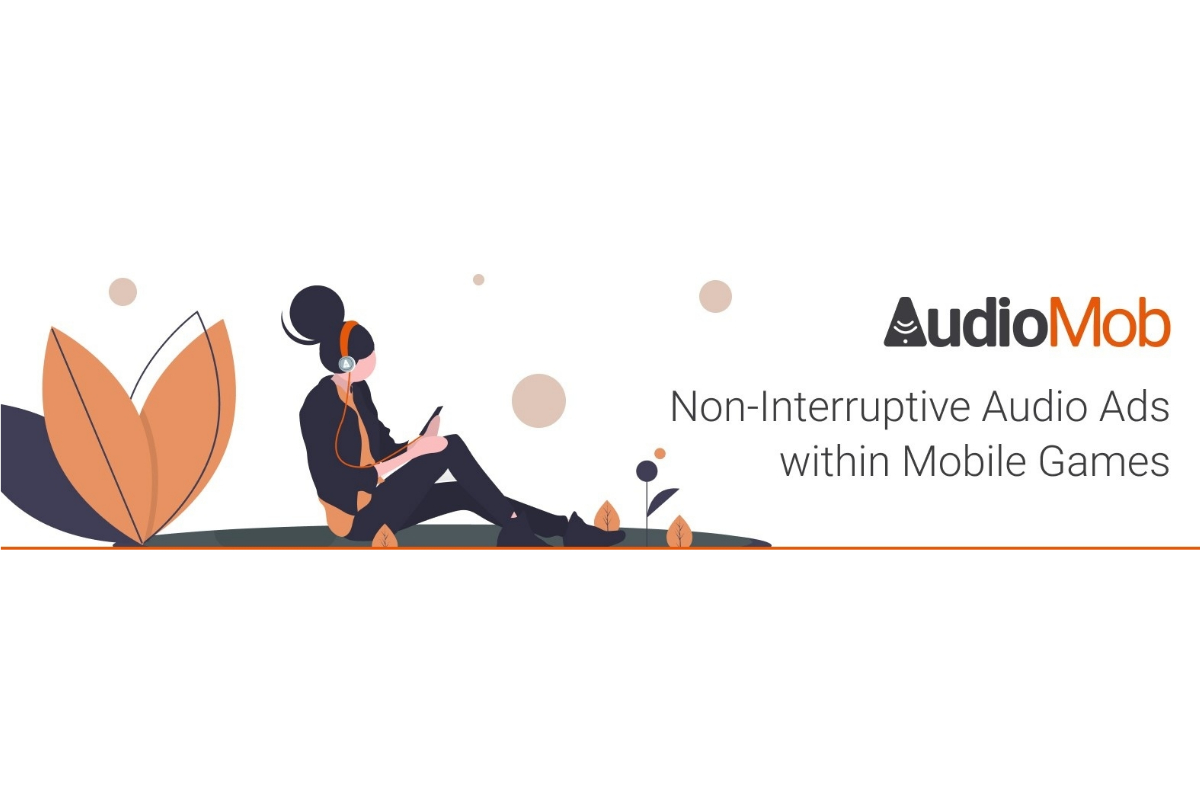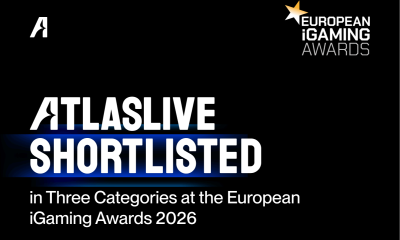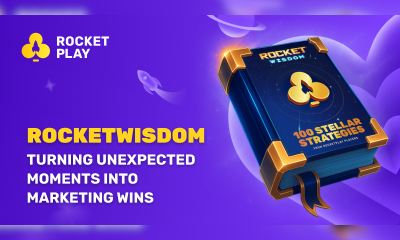Gaming
How Adtech Platform AudioMob Is Changing The Mobile Game Monetization Through Amazon Web Services

AudioMob was founded after we spotted a tremendous monetization opportunity for game developers.
Rewarded video ads in mobile games have made developers and publishers money, but always at the expense of interrupting games. Yet these interruptions don’t just irritate players, they can even push them away from a game entirely, thereby damaging retention. This can be incredibly frustrating for game developers, who have put time and craft into building games that they want to have thrive, both creatively and commercially.
In considering the solution to this challenge, the core AudioMob concept was born. We let advertisers reach their consumers and game developers monetize their games without interrupting gameplay by using audio ads. ‘In-game audio ads’ are what we do, and we’ve seen developers implement them in truly interesting ways.
Larger tech companies, such as Facebook and Google, already offer ad platforms. This begs the question – why create a new platform?
The answer is straightforward. Existing Demand Side Platforms (or DSPs) cannot deliver audio ads in-game. Our Ad Platform enables advertisers to serve In-game audio ads with banners while users play their game. Therefore, players are given something to click on to head to a landing page or another app, should they feel engaged by the ad.
That potential is most powerfully demonstrated through an active example of AudioMob. Grammy award winning artist Nas and his label Mass Appeal created the following audio ad in order to promote his new album, King’s Disease II. They were confident that mobile games would expose them to wider audiences. This also presents an example of how personal and direct audio ads can feel.
Amazon Web Services (AWS) suite has proved to be a powerful tool in helping us achieve our vision for in-game audio ads as an option that is better for players, advertisers, and game developers.
Why Amazon Web Services?
What we’re doing is unique, so we needed to build a unique stack, and AWS matched our vision and ambition. Be it hosting everything from our user interface to providing a Content Delivery Network (CDN), AWS lets AudioMob serve audio content worldwide in milliseconds.
Meeting AudioMob Privacy Requirements with AWS
On the subject of digital advertising, undoubtedly you will notice the privacy conversation occurring around the world. We believe audio advertising makes it possible to respect the privacy of our users while ensuring the games and apps we love remain free to play.
We’ve deliberately built privacy-first adtech that places contextuality at its core. This approach allows for the ‘best of both worlds,’ letting ads find relevant audiences without utilizing personal data.
However, ad campaigns inevitably generate large amounts of data. This includes the data about a campaign’s success as well as aggregated contextual data held for 90 days and more. And that means we have data to keep safe beyond the data that is processed and stored so that it can be analyzed for insight.
AWS infrastructure aligns with our privacy stance and has achieved numerous internationally-recognized certifications and accreditations. It has demonstrated compliance with rigorous international standards, such as ISO 27017 for cloud security, ISO 27701 for privacy information management, and ISO 27018 for cloud privacy.
Meeting Advertiser Demand with EC2
Choosing the AWS product line started with building our own DSP. A DSP ultimately lets advertisers buy ad space within websites and apps. Ours is known as the AudioMob Ad Platform, and it lets advertisers create, manage, and set the targeting criteria of their advertising campaigns, thereby delivering the right ads to the right people, optimizing, analyzing success, and much more.
When artists or brands want to start a campaign through the AudioMob Ad Platform, they upload an mp3 file and a banner image that is instantly compressed through our internal code hosted on AWS. Compressing those larger file assets to a global average of 35KB, AudioMob can later distribute those ads without latency concerns and into countries with slower mobile data connection speeds. Rendering and content load issues become non-existent.
AWS Elastic Cloud Computing (EC2) provides instant access to server space, computing power, and various databases. Purpose-built to make web-scale cloud computing easier for developers like us, EC2’s accessibility in 25 regions and 81 availability zones globally allows for an efficiency never seen before.
As a leader within the adtech industry, we couldn’t build our own equivalents to what AWS offers. We’re motivated to deliver player-centric ads that impact equally well for advertisers and game developers. To do that well, we have employed the AWS stack knack for scalability and elasticity, global reach, and intelligent data storage options.
Delivering Ads with CloudFront
Over 2.8 billion mobile gamers spend an average of 26 minutes per day on gaming apps. This provides AudioMob the unique opportunity to quickly serve audio ads to around 40,000 games. Based on the last three months of internal data, this allows an average impression rate of 372,908 per day, leading to a 1,000% increase in click-through-rate as compared to traditional banner ads.
We let advertisers reach users based on age, gender, location, language, mobile device, and mobile carrier through our Ad Platform. The process works as follows: ad slots open in games and are filled in a fraction of a second, as multiple advertisers make a bid for the opportunity to connect with a player. This makes a Content Delivery Network essential, as our audio content must reach the end user in any location defined by our advertisers without delay.
Wherever we deliver an ad in a game, AWS’ Cloudfront’s vast geographic spread puts us anywhere globally, thereby ensuring that AudioMob fills the available advertising space extremely fast, and with minimal latency. Furthermore, this ensures that we fill ads in a timely manner, and can continue to deliver the non-interrupting audio ads into mobile games anywhere that advertisers have specified.
Before these developments, we handled many of these processes in-house, which was pretty costly to our bottom line. AWS’s Cloudfront integration allows data serving capabilities without transfer fees for origin fetches, and it offers custom Transport Layer Security (TLS) certification at no charge. Most importantly, the highly secure Content Delivery Network provides both the network and application comforting levels of security.
Meeting Reporting Requirements with S3, RedShift, and Glacier
Measuring creative engagement and providing campaign reporting is critical in advertising. We have built volume detection with selected partners, so that brands can be sure that players hear ads rather than mute them or set the volume extremely low. Furthermore, we can track whether users mute, close, or click on an ad. However, all of this requires data processing, storage, and reporting.
At AudioMob, we utilize Amazon S3 to store our campaign serving logs and RedShift for analysis. That lets us keep our data secure, while giving advertisers the power to optimise their audio ad campaigns based on the insights we provide using RedShift.
RedShift is a column-oriented DBMS database management system (DBMS) that stores data tables by column rather than by row and utilizes parallel processing to enable fast execution. This makes querying large amounts of data extremely fast and lets our advertisers query campaign data within milliseconds (0.7 seconds).
In addition, we utilize the AWS cold storage solution S3 Glacier. For data inquiries older than five years, this yields slower but reasonable query times (around 100x our RedShift query times). This is achieved by using Amazon Redshift Spectrum, which lets us query data from older campaigns directly from our log files stored on Amazon S3.
AWS facilitates the potential of audio
Ultimately, AWS has provided AudioMob with backend tools and services that greatly aid the performance of the ad format we’ve created. It’s been a perfect accompaniment to our rapid growth, helped us stay elastic and scalable, let us meet the needs of real-time international bidding, and support our data values and strategy. As well, of course, it lets our tech empower advertisers to reach wider audiences.
“The team here at AudioMob are extremely proud of everything we built ourselves, from the in-game audio ad concept to executing and expanding our company. We did those things ourselves – but AWS has facilitated our progress in myriad ways, and ultimately been a tremendous help in letting us deliver on our vision of in-game audio ads as a more user friendly and seamless advertising experience.” – Wilfrid Obeng, Co-Founder & CTO, AudioMob
Powered by WPeMatico
Battle of the Tribes
POLYTOPIA WORLD CHAMPIONSHIP 2025 BREAKS RECORD PARTICIPATION AS FINALS DRAW CLOSER

Reading Time: 2 minutes
Celebrated strategy game The Battle of Polytopia confirms its first ever World Championships has exceeded expectations with over 10,000 sign-ups in its qualifying rounds. While no stranger to tournaments, previously hosting smaller scale, local tournaments called ‘Polysseums’, developer Midjiwan’s first step into global esports has been met with extreme success. The inclusive esports event has a $10,000 prize pool and will conclude on 6 December 2025, 14:00-21:00.
The finals will take place in front of a live-studio audience, with expert commentary and a chance to peek behind the scenes at Midjiwan itself. First place will receive $4,000, the runner-up will take away $2,000, the third and fourth place finishers will get $1,500, and the fifth and sixth place $500.
The Polytopia World Championship 2025 is being hosted by eSports platform, Challengermode, who Midjiwan has relied on for its monthly local tournaments since 2022. Midjiwan also partnered with Black Molly Entertainment to help organise and manage the event. Black Molly Entertainment have years of experience managing eSports tournaments, with notable events including the Geoguesser World Cup and CS:GO Pinnacle Cup Championship.
Midjiwan has worked closely with its community to ensure engagement is high with each round, building a bespoke ‘Spectator Mode’ into the game so fans can watch each game live through the game itself. In the spectator mode the viewer has visibility of all players simultaneously, with stats on how many cities, technologies, kills and more available for quick access.
Christian Lovstedt, CEO of Midjiwan commented:
“Polytopia has always been about welcoming all kinds of players into the world of 4X strategy. That’s why our championship is open to everyone – not just pros with sponsors. We’ve been thrilled at the amount of interest this tournament received from our community, reaching participation numbers way beyond our expectations. We’re excited to bring the finalists to Stockholm and can’t wait to see the strategies that emerge.”
The Polytopia World Championship 2025 kicked off in September, with its ‘Battle of the Tribes’ qualifying round – weekly battles where players competed to be the best in each of the game’s 12 tribes. After an exciting six weeks, the top player from each tribe faced-off, reducing the qualifiers to six finalists. These six winners are listed down below.
|
Tribe |
Qualifying Player |
|
IMPERIUS |
ArthurL248 |
|
BARDUR |
slimmingboy |
|
OUMAJI |
Dreamlander3000 |
|
HOODRICK |
Theetat |
|
XIN-Xi |
LeLiberateur |
|
LUXIDOOR |
Meisterlampe |
Recaps of each round of the tournament prior to the finals can be watched on the official Battle of Polytopia YouTube channel.
-
Part 1: Polytopia World Championship 1st Qualifiers Wrap-Up – BARDUR, IMPERIUS, KICKOO, ZEBASI
-
Part 2: Qualifiers Wrap-Up – Oumaji Hoodrick Yadakk & Quetzali – World Champoinship 2025
-
Part 3: Final Qualifiers Wrap-Up – Xin-Xi, Luxidoor, Ai-Mo & Vengir – World Championship 2025
-
Face-off stream: https://youtube.com/live/GnU6mWPoJiY?feature=share
To watch the finals live on December 6,visit here: https://polytopia.io/stream/
To stay up to date on the Polytopia World Championship 2025, or purchase one of the limited tickets for the live event, visit the official website or join the Official Polytopia Discord.
The post POLYTOPIA WORLD CHAMPIONSHIP 2025 BREAKS RECORD PARTICIPATION AS FINALS DRAW CLOSER appeared first on European Gaming Industry News.
Betiator
Delasport Unveils a Crash Game for Sports Betting

Reading Time: 2 minutes
Leading iGaming supplier Delasport teases a one-of-a-kind sports betting crash game called Betiator – a new in-play experience that merges live sports with the tension and excitement of crash games.
Inspired by the groundbreaking casino genre, the company once again pushes the whole industry to a new phase in evolution by allowing sports bettors to play in the same easy and fun way as fellow casino players. Crash games are booming in the casino world, showing that players crave more emotional, fast, and visually engaging formats – and Betiator brings that same adrenaline-charged energy to the sportsbook.
It changes the scene by introducing a truly innovative way to bet on sports, keeping players at the edge of their seats during the game. Designed to excite both sports bettors and casino players, it marks a defining moment for innovation.
This product comes as a logical next step in the evolution of live betting and the company’s goal to disrupt the iGaming industry. It demonstrates Delasport’s successful commitment to unique innovation: a strategy they call “Going Beyond Content” –building on the success of products and features like SuperPot, My Sportsbook, My Combo, Double My Winnings, and many more.
“Sports bettors deserve the same level of innovation and excitement that casino players get all the time,” Delasport’s CEO Oren Cohen Shwartz says. “At Delasport we’re taking the whole game to a new playing field with Betiator. Live betting won’t feel outdated anymore as we’re bringing in the thrill of the casino to sports betting.”
While details about Betiator remain under wraps for now, Delasport promises a completely new way to experience live sports. Operators and partners eager to see it in action can schedule exclusive demos and discover more at ICE Barcelona 2026, taking place January 19–21, where Betiator will make its official debut.
The post Delasport Unveils a Crash Game for Sports Betting appeared first on European Gaming Industry News.
Central Europe
game’s 2026 industry barometer – the mood in the German games industry is beginning to brighten

Reading Time: 2 minutes
The post game’s 2026 industry barometer – the mood in the German games industry is beginning to brighten appeared first on European Gaming Industry News.
-

 Andrew Jackson5 days ago
Andrew Jackson5 days agoScientific Games Adds to Information and Security Management Certifications, Continues Setting Global Industry Gold Standard
-

 Eastern Europe5 days ago
Eastern Europe5 days agoHIGHLIGHT GAMES LIVE IN ROMANIA WITH FORTUNA ENTERTAINMENT GROUP
-

 Best Solutions for iGaming Industry in Romania 20255 days ago
Best Solutions for iGaming Industry in Romania 20255 days agoSoft2Bet Nominated for Best Solutions for iGaming Industry in Romania 2025
-

 Australia5 days ago
Australia5 days agoBetMakers Signs Multi-Year Agreement to Launch CrownBet
-

 Latest News5 days ago
Latest News5 days agoAtlaslive Shortlisted in Three Categories at the European iGaming Awards 2026
-

 Nasdaq:GLPI4 days ago
Nasdaq:GLPI4 days agoGaming and Leisure Properties Expands Board of Directors With Appointment of Michael Borofsky
-

 Latest News5 days ago
Latest News5 days agoHow RocketWisdom Turned From An Internal Activity Into a Marketing Case
-

 Uncategorized5 days ago
Uncategorized5 days agoWEC25 in Kuala Lumpur Marks the Most Diverse MLBB Competition to Date









